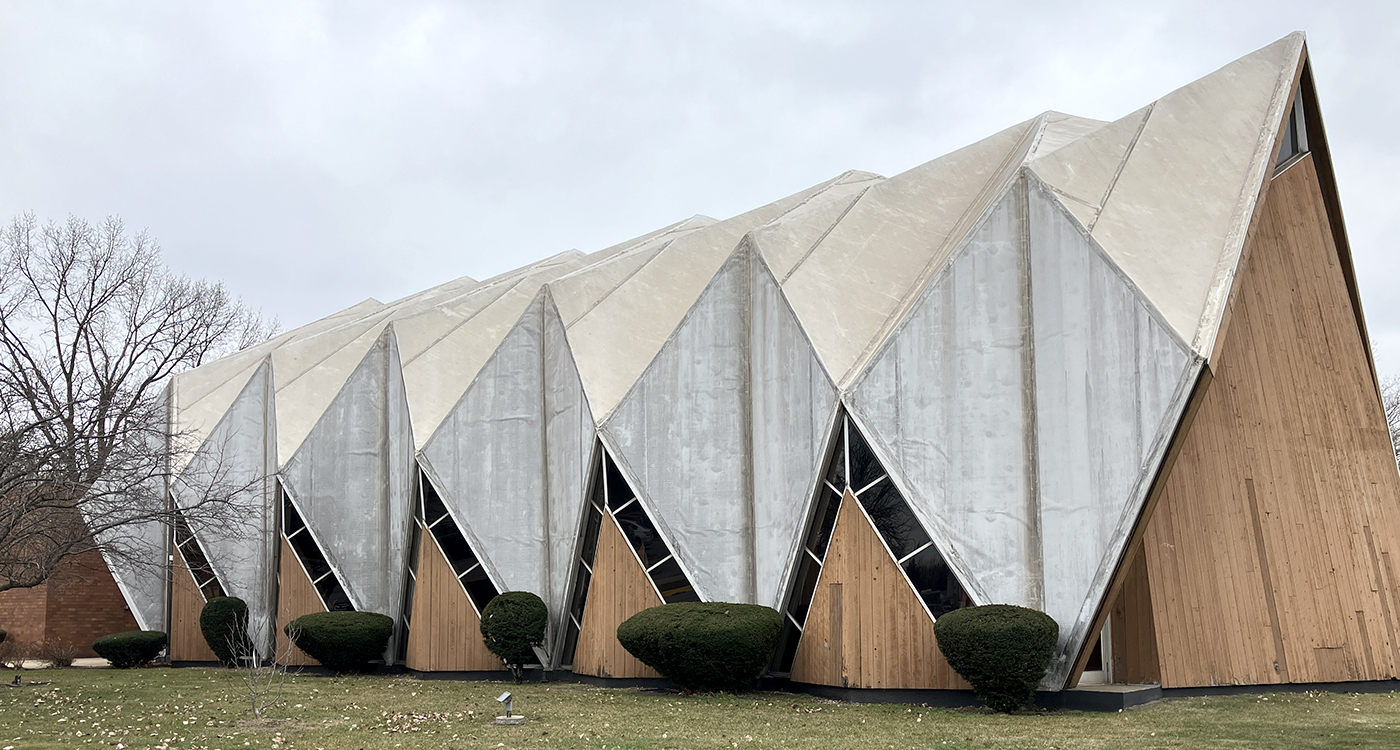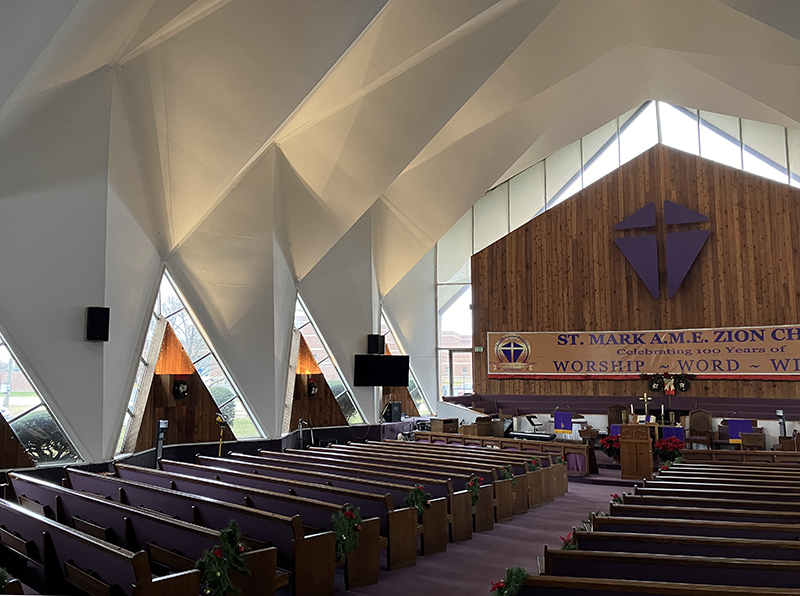NEWS
East Chicago Church Captures Unique Architectural Vision
Wendell Campbell’s pioneering career helped pave the path for other minority architects.

Paving the Way
Wendell Campbell (1927-2008) loved logic puzzles. The son of an East Chicago carpenter, Campbell exhibited curiosity in how things worked early on, unhinging doors and reconfiguring crown molding at the family home. That same inquisitiveness laid the groundwork for his future as an influential architect.
When Campbell graduated college in 1957, his BA in Architecture and City Planning and distinguished service in WWII didn’t count for much. Despite mentorship and training by design elites Mies Van Der Rohe and Ludwig Hilberseimer at the Illinois Institute of Technology, racial prejudice blocked his early attempts to practice architecture.
Undaunted, Campbell took work as an urban planner. In 1966 he founded his own architecture firm, Wendell Campbell Associates, launching a prestigious career that would help pave the path for other minority architects.
Now, a grant from Indiana Landmarks’ Black Heritage Preservation Program is expected to help nominate one of Campbell’s Indiana commissions – a distinctive Modernist church in his hometown of East Chicago – to the National Register of Historic Places.
St. Mark AME Zion Church has been an active part of the East Chicago community since its founding in 1916. The original church served the city from a building located at 140th and Deodar Streets. By the mid-1960s, the congregation needed more room for its community missions and secured space for a new building in East Chicago’s flourishing Prairie Park neighborhood. Church leaders engaged Campbell to design a new building, specifying ample room to carry on the church’s many community programs.
Completed in 1973, the building’s distinctive geometric design provoked conversation. The design suggests the shape of two hands interlocked in prayer, a multi-planed triangular roof capping broad walls, with ribbon windows zigzagging down each side of an expansive sanctuary. A small glass-enclosed vestibule leads to an administrative wing with clergy offices, meeting space, bathrooms, and classrooms.
 The design was unique among Campbell’s hundreds of projects. “The building clearly conveys the intent of the architect,” notes Kurt Garner, who has been hired to complete the National Register nomination. “The form functions distinctively to show praying hands,” he adds.
The design was unique among Campbell’s hundreds of projects. “The building clearly conveys the intent of the architect,” notes Kurt Garner, who has been hired to complete the National Register nomination. “The form functions distinctively to show praying hands,” he adds.
In the 1980s and ‘90s, Campbell went on to work on high-profile projects in Chicago, including expansions at McCormick Place and the DuSable Museum of African American History, restoration of the Michigan Avenue drawbridge, and remodeling work at the Chicago Military Academy in Bronzeville – a project that earned a National Preservation Honor Award from the National Trust for Historic Preservation. His firm, now called Campbell Tiu Campbell, also produced residential plans for U.S. embassies in Saudi Arabia and Gabon, and redevelopment plans for New Orleans, Detroit, Chicago, Las Vegas, Gary, and Milwaukee.
Today, Campbell is recognized as one of the twentieth century’s most influential Black architects and credited with helping to diversify the industry. He co-founded and served as first president of National Organization of Minority Architects (NOMA). Learn more about Campbell and his work at www.noma.net.
Stay up to date on the latest news, stories, and events from Indiana Landmarks, around the state or in your area.
